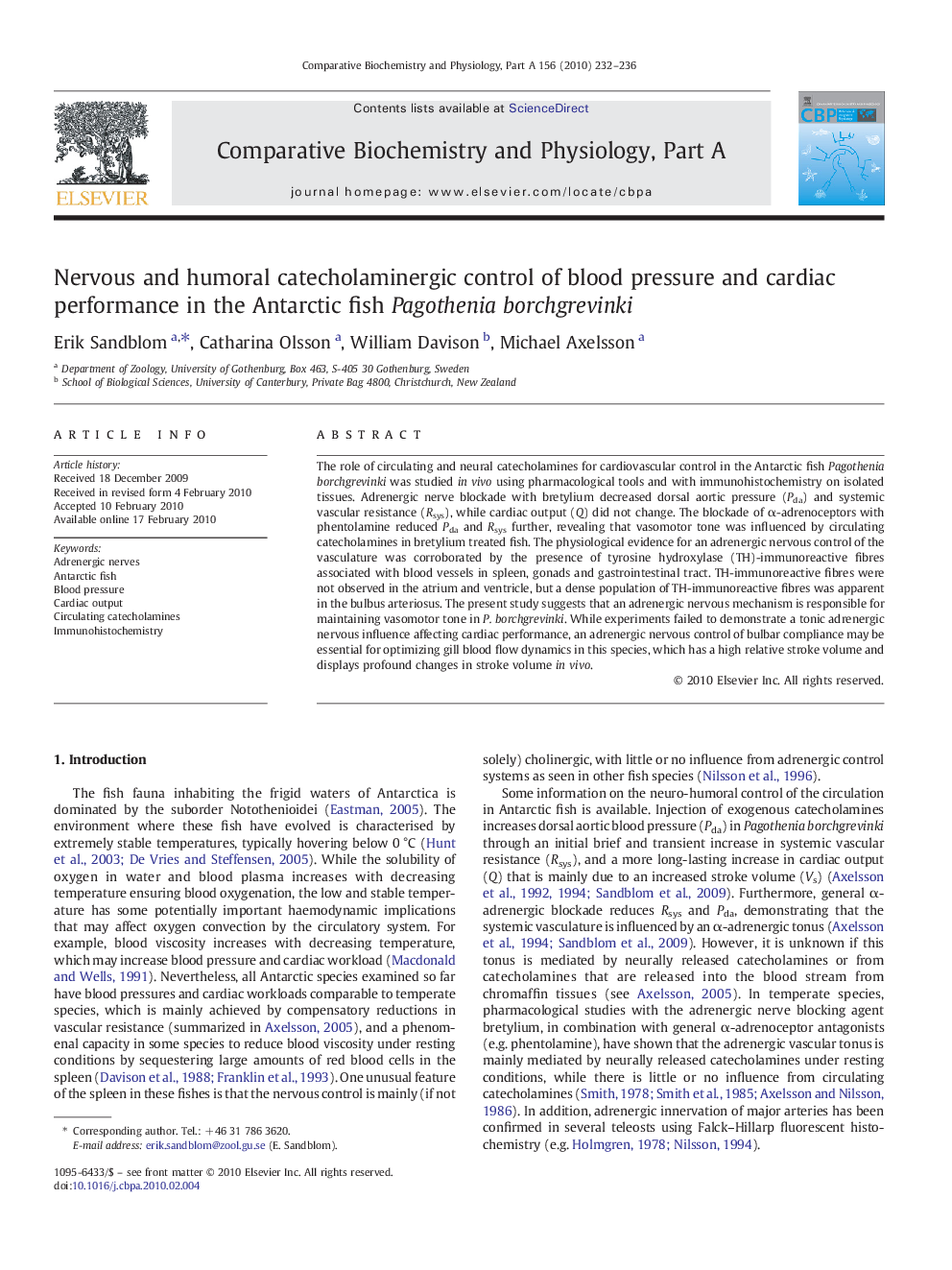| Article ID | Journal | Published Year | Pages | File Type |
|---|---|---|---|---|
| 1973326 | Comparative Biochemistry and Physiology Part A: Molecular & Integrative Physiology | 2010 | 5 Pages |
The role of circulating and neural catecholamines for cardiovascular control in the Antarctic fish Pagothenia borchgrevinki was studied in vivo using pharmacological tools and with immunohistochemistry on isolated tissues. Adrenergic nerve blockade with bretylium decreased dorsal aortic pressure (Pda) and systemic vascular resistance (Rsys), while cardiac output (Q) did not change. The blockade of α-adrenoceptors with phentolamine reduced Pda and Rsys further, revealing that vasomotor tone was influenced by circulating catecholamines in bretylium treated fish. The physiological evidence for an adrenergic nervous control of the vasculature was corroborated by the presence of tyrosine hydroxylase (TH)-immunoreactive fibres associated with blood vessels in spleen, gonads and gastrointestinal tract. TH-immunoreactive fibres were not observed in the atrium and ventricle, but a dense population of TH-immunoreactive fibres was apparent in the bulbus arteriosus. The present study suggests that an adrenergic nervous mechanism is responsible for maintaining vasomotor tone in P. borchgrevinki. While experiments failed to demonstrate a tonic adrenergic nervous influence affecting cardiac performance, an adrenergic nervous control of bulbar compliance may be essential for optimizing gill blood flow dynamics in this species, which has a high relative stroke volume and displays profound changes in stroke volume in vivo.
